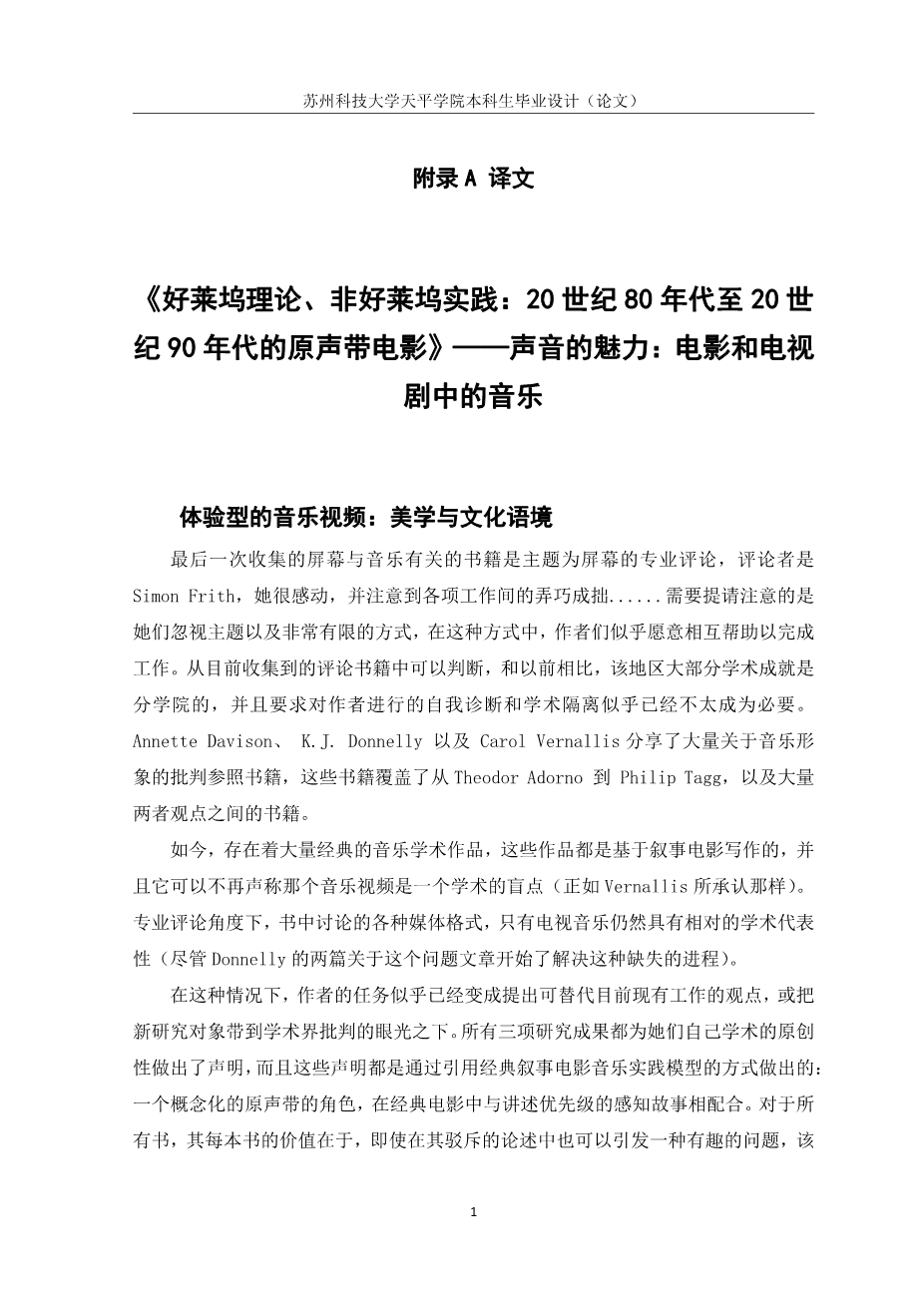Hollywood Theory, Non-Hollywood Practice: Cinema Soundtracks in the 1980s and 1990s The Spectre of Sound: Music in Film and Television
Experiencing Music Video: Aesthetics and Cultural Context
The last time a collection of screen music-related books was the subject of a Screen review, the reviewer Simon Frith was moved to note each works self-defeating hellip; need to draw attention to their subjects neglect as well as the very limited manner in which the authors seemed to be engaged with each other . Judging by the books grouped together in the present review, the scholarship in the area is now much more collegiate, and the requirement on the authors to self-diagnose academic isolation seems to have become unnecessary. Annette Davison, K.J. Donnelly and Carol Vernallis share a plethora of critical references on music–image relationships, from Theodor Adorno to Philip Tagg and many points in between.
A substantial canon of academic writing on music in narrative film now exists, and it can no longer be claimed that music video is a scholarly blind spot (as Vernallis admits). Of the various media formats discussed in the books under review, only television music remains relatively under-represented academically (though Donnellys two chapters on the subject begin the process of addressing this absence).
In this context, the authors task would appear to be to present alternatives to existing work, or to bring new objects of study to critical light. All three studies make claims for their own originality by referencing a model of classical narrative film music practices: a conceptualization of the soundtracks role as fitting in with classical cinemas perceived storytelling priorities. For all the books individual merits, the regular recourse to notions of the classical, even in the service of its refutation, raises interesting questions about the possibility (or impossibility) of doing without such a concept entirely. Thus, these works reveal the classical to be a category as problematic yet insistent in writing on music–image relations as it is in other areas of screen studies enquiry.
As its title suggests, Davisons Hollywood Theory, Non-Hollywood Practice: Cinema Soundtracks in the 1980s and 1990s engages with classical film music theory most explici8tly. Indeed, about a quarter of the book is devoted to the explication of, first, Classical Hollywood Cinema as it has been conceived academically, and second, the classical scoring practice associated with it (which Davison sees revived in the so-called post-classical Hollywood of the mid 1970s onwards). This provides the ground on which Davison makes her key claim:
The central argument of this book is that, by operating as a signifier of classical – and, indeed, New Hollywood cinema – the classical Hollywood score offered those making films outside and on the margins of Hollywood cinema in the 1980s and 1990s a further means by which they could differentiate their cinemas from Hollywoods, through the production of scores and soundtracks which critique or refer to this practice in particular ways (p. 59). There follow close analyses of four films whose soundtracks, according to Davison, refer to the classical model at the same time as they offer an alternative. Through her sequencing of the case studies, Davison outlines possibilities of alternative practice that range from a total deconstruction of the classical soundtracks conventional storytelling functions (as witnessed in Jean-Luc Godards Prenom: Carmen [1983]) to the identification of a scoring practice that mimics certain aspects of the classical in its collaborative nature, yet provides a utopian alternative to it (as seen through David Lynchs Wild at Heart [1990]). In between, she explores the notion of the soundtrack as a liberating force (Derek Jarmans The Garden [1990]), and the potential for a compromise to be found between classical and alternative models (Wim Wenders Wings of Desire [1987]).
Davisons reading of each film is imaginative and very well detailed. She demonstrates a particular facility for identifying, and ascribing a significance to, different types of sound on the same soundtrack. This is done with particular success in her readings of The Garden and Wings of Desire. Her analysis does not seek to hide her evident musical training, but, in nearly all cases, remains intelligible and persuasive to non-musicologists such as myself (who will just have to accept the occasional use of musical notation as pretty pictures).
It is questionable how much of the extremely comprehensive scene-setting undertaken by Davison in the books early sections is necessary for an appreciation of the individual film analyses. Nevertheless, her summaries of discussions about classical and post-classical Hollywood cinema and the classical film score are exemplary, and they are conducted with a thoroughness which is understandable, perhaps, in a book which takes its place in the publishers Popular and Folk Music series rather than in a screen studies collection.
There remains a mismatch, however, between the concentration on Hollywood as an institutional, industrial and ideological force in the early chapters of the book, and the auteurist bent of the analysis that follows in later chapters. For example, the chapter on New Hollywood cinema and (post-?) classical scoring concludes with statistical information about US cinemas growth in the overseas market during the 1980s. Yet this detail seems unnecessary in the light of the subsequent interpretation of the various non-Hollywood soundtracks as imaginative responses to mainstream practices on the part of individual filmmakers. The division between descriptions of Hollywood as intransigently institutional, and the implicit understanding of art-house cinema as a space for the free expression of the auteur (made explicit in the celebration of Lynch in the final case study) is
剩余内容已隐藏,支付完成后下载完整资料


英语译文共 5 页,剩余内容已隐藏,支付完成后下载完整资料
资料编号:[608211],资料为PDF文档或Word文档,PDF文档可免费转换为Word


